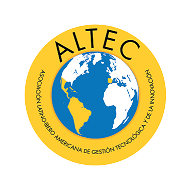| dc.contributor.author | Niza, Samuel | |
| dc.contributor.author | Pina, André | |
| dc.contributor.author | Ferreira, Daniela | |
| dc.contributor.author | Santos, Luis | |
| dc.contributor.author | Ferrão, Paulo | |
| dc.date.accessioned | 2021-05-27T15:56:08Z | |
| dc.date.available | 2021-05-27T15:56:08Z | |
| dc.date.issued | 2013 | |
| dc.identifier.uri | https://hdl.handle.net/20.500.13048/965 | |
| dc.description.abstract | The metabolism of a city is dependent on anthropogenic and natural physical inputs of energy and materials, processes for transforming those inputs for urban activities, additions to the stocks contained within its spatial boundaries, and the waste and emissions handling. The main purpose of this work consists on further developing methods that allow identifying the material consumption of activity sectors within a city. The method presented in this article allows the use of internationally available data (e.g. OECD Input Output matrices), which enables analysing a large range of urban areas. The method is applied to metropolitan economies in Europe (Lisbon and Paris) and Asia (Seoul-Incheon and Shanghai), and the variability of the physical structure of these economies is assessed. The urban areas are compared in terms of total and type of material input, destination of material inputs within the economy and analysis of the manufacturing sectors. | |
| dc.description.abstract | O metabolismo de uma cidade depende dos fluxos físicos naturais e antropogénicos de
materiais e energia, dos processos para transformar esses fluxos e usa-los em atividades
urbanas, da acumulação de materiais ao stock existente e da administração dos resíduos
e emissões.
O objetivo deste trabalho consiste no desenvolvimento de métodos que permitam
identificar o consumo de materiais por setores de atividade. O método apresentado
permite a utilização de dados disponíveis internacionalmente (ex. matrizes Input Output
publicadas pela OCDE), possibilitando a análise de várias áreas urbanas. O método é
aplicado às áreas metropolitanas de Lisboa e Paris, na Europa, e Seul e Xangai, na Ásia,
sendo analisada a variabilidade da estrutura física destas economias. As áreas urbanas
em causa são comparadas em termos do seu input total de materiais, dos diferentes tipos
de materiais, do destino final dos materiais consumidos na economia e na análise dos
materiais consumidos pelo setor industrial. | |
| dc.language.iso | eng | |
| dc.rights | info:eu-repo/semantics/openAccess | |
| dc.rights | Atribución-NoComercial-SinDerivadas 2.5 Perú | |
| dc.rights.uri | http://creativecommons.org/licenses/by-nc-nd/2.5/pe/ | |
| dc.subject | Estructura física | |
| dc.subject | Economías urbanas | |
| dc.title | The physical structure of urban economies – comparative assessment | |
| dc.type | info:eu-repo/semantics/conferenceObject | |
| dc.relation.conferencedate | 27-31 de octubre, 2013 | |
| dc.relation.conferencename | XV Congreso Latino-Iberoamericano de Gestión Tecnológica | |
| dc.relation.conferenceplace | Porto, Portugal | |
| dc.contributor.corporatename | IN+, Center for Innovation, Technology and Policy Research | |


